If you want to know about the staircase design or landscape garden or requirements for disabled persons in a building, please click the link.
Introduction
Chinese architecture is a style of architecture that has developed over several millennia in China. It is a complex art form that embodies the cultural and historical heritage of China. Chinese architecture is characterized by a unique style that emphasizes symmetry, balance, and harmony.

The historical significance of Chinese architecture lies in its contribution to the development of Chinese culture and society. Chinese architecture has played a vital role in shaping Chinese art, culture, and philosophy. It reflects the Chinese way of life, their beliefs, and their values. Chinese architecture has also played a significant role in promoting the development of cities and towns in China.
In contemporary times, understanding Chinese architecture is crucial for a variety of reasons. For one, it helps us understand the rich cultural heritage of China and appreciate its art and architecture. It also helps us understand the role of architecture in shaping modern Chinese cities and towns. Furthermore, understanding Chinese architecture can provide valuable insights into how architecture can be used to address contemporary challenges such as sustainable development, climate change, and urbanization.
1) History of Chinese Architecture
Chinese architecture has a long and rich history, spanning over several millennia. It has evolved over time, influenced by cultural, technological, and historical factors. The following is an overview of the evolution of Chinese architecture and its key characteristics and features from different eras and dynasties.
- Prehistoric Times to the Shang Dynasty (1600 BC–1046 BC) During this period, Chinese architecture was simple and utilitarian. Buildings were constructed using mud, wood, and reeds. The most notable architectural structures of this era are the burial mounds and ceremonial structures, including the famous Shang dynasty palace at Yin.

- Zhou Dynasty (1046 BC–256 BC) The Zhou Dynasty saw the emergence of more sophisticated and permanent building materials such as brick and stone. The buildings were characterized by their elaborate roofs, timber structures, and ornate decoration. The key features of the Zhou Dynasty architecture include symmetry, axial planning, and the use of open courtyards. One of the most significant architectural structures from this period is the Zhou royal palace.

- Qin and Han Dynasties (221 BC–220 AD) During the Qin and Han dynasties, there was a significant shift in Chinese architecture towards grandeur and monumentality. The buildings were constructed using stone and brick, with roofs made of glazed tiles. The key characteristics of this era include the use of axial symmetry, elaborate ornamentation, and the integration of landscape into architecture. Examples of notable architectural structures from this era include the Great Wall of China and the Mausoleum of the Emperor Qin.
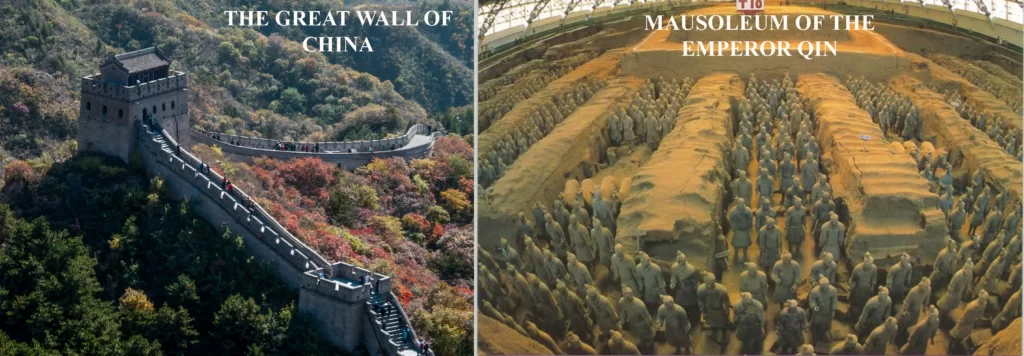
- Tang Dynasty (618-907 AD) The Tang Dynasty marked the height of Chinese architecture. The architecture of this period was characterized by its elegant simplicity, boldness, and symmetry. The Tang Dynasty architecture features many pagodas, palaces, and temples, which are still prominent in modern-day China. Key characteristics of this era include the use of glazed tiles, the emphasis on symmetry, and the use of curving roofs. The Giant Wild Goose Pagoda in Xi’an is an excellent example of Tang Dynasty architecture.
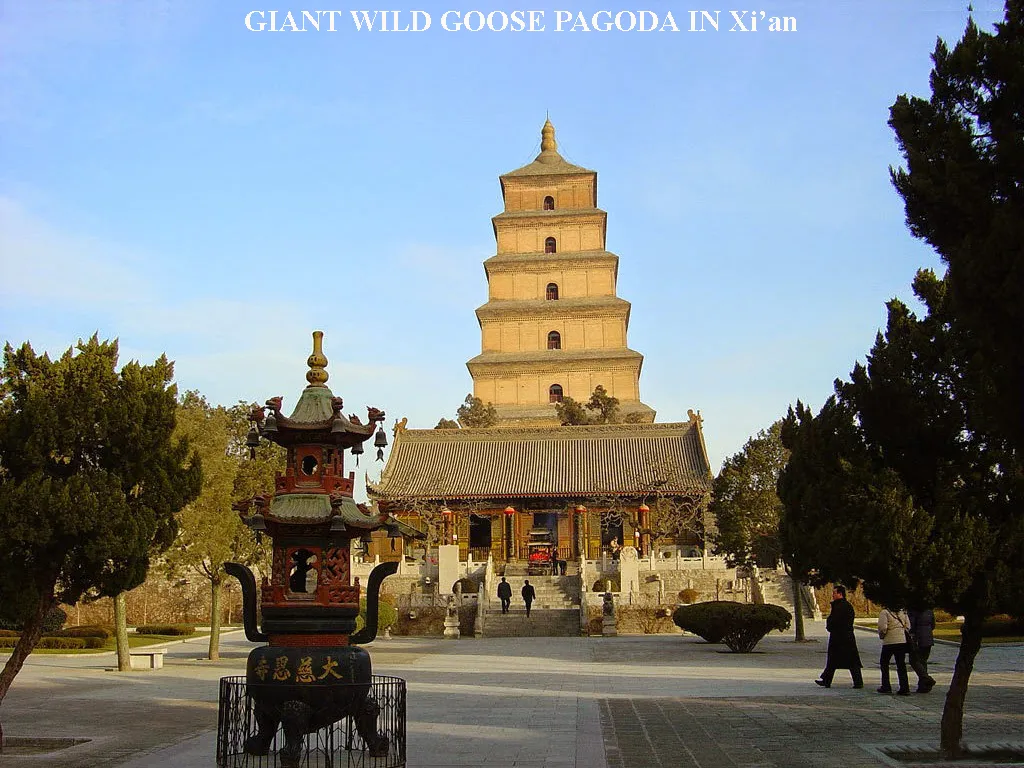
- Song Dynasty (960-1279 AD) During the Song Dynasty, there was a shift towards more refined and delicate architecture. The buildings of this era were constructed using brick and timber, with curved roofs and ornate decoration. Key characteristics of this era include the use of intricate roof designs, the emphasis on decorative elements, and the integration of gardens and courtyards into the architecture. The Song Dynasty is also known for its famous Song Imperial Street in Kaifeng.
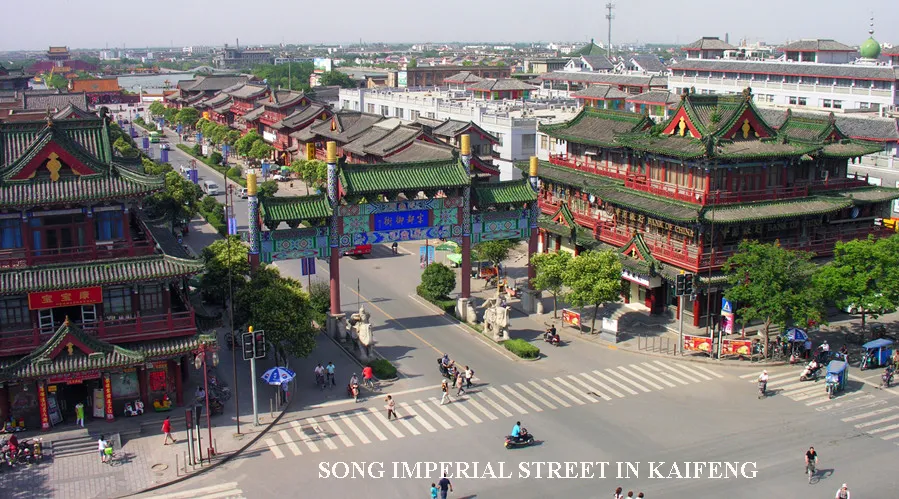
- Ming Dynasty (1368-1644 AD) The Ming Dynasty is known for its impressive architecture, which includes the famous Forbidden City in Beijing. The buildings of this era were characterized by their grandeur, symmetry, and ornate decoration. Key features of Ming Dynasty architecture include the use of imperial yellow glazed tiles, the emphasis on symmetry and axial planning, and the use of open courtyards. The Great Wall of China was also restored during this period.

- Qing Dynasty (1644-1911 AD) During the Qing Dynasty, Chinese architecture was characterized by a fusion of Chinese and Western influences. The buildings of this era were constructed using brick, stone, and timber, with elaborate ornamentation and curved roofs. Key features of this era include the use of bright colors, the emphasis on decoration, and the integration of Western elements into Chinese architecture. The Summer Palace in Beijing is an excellent example of Qing Dynasty architecture.

In conclusion, Chinese architecture has a long and fascinating history, which has been shaped by various cultural, technological, and historical factors. The architecture of each era and dynasty has its unique characteristics and features, which have contributed to the rich cultural heritage of China.
2) Styles of Chinese Architecture
Chinese architecture is renowned for its unique styles, which are influenced by cultural and historical factors. The following is an overview of the various styles of Chinese architecture, including imperial, Buddhist, and traditional architecture.
i) Imperial Architecture
Imperial architecture refers to the buildings and structures that were used for political, religious, and ceremonial purposes during China’s imperial era. Imperial architecture is characterized by its grandeur, symmetrical design, and elaborate decoration.
The key features of imperial architecture include the use of ornate roofs, red and gold color schemes, and the integration of feng shui principles.
Examples of notable imperial architecture structures include the Forbidden City, Summer Palace, and the Temple of Heaven.

ii) Buddhist Architecture
Buddhist architecture is characterized by its simplicity, symmetry, and emphasis on spiritual and religious themes. Buddhist architecture is inspired by Indian and Nepalese Buddhist architecture styles and is characterized by the use of curved roofs, pagodas, and intricate carvings.
The key features of Buddhist architecture include the use of religious iconography, the integration of nature, and the use of symbolism.
Examples of notable Buddhist architecture structures include the Mogao Caves, White Horse Temple, and the Lingyin Temple.

iii) Traditional Architecture
Traditional Chinese architecture refers to buildings and structures that were constructed before the modern era. Traditional architecture is characterized by its wooden structure, tiled roofs, and ornate decoration. Traditional architecture is inspired by Chinese culture and tradition and is characterized by the use of symmetrical design and the integration of nature.
The key features of traditional architecture include the use of courtyards, the integration of natural materials, and the use of feng shui principles.
Examples of notable traditional architecture structures include the Pingyao Ancient City, Huizhou Ancient City, and the Hui-style Houses.

Each style of Chinese architecture has cultural and historical significance. Imperial architecture reflects the power, wealth, and prestige of the imperial era. Buddhist architecture represents the spiritual and religious values of Buddhism, which has played a significant role in Chinese culture. Traditional architecture reflects the Chinese cultural identity and heritage, which has been shaped by thousands of years of history and tradition.
In conclusion, the various styles of Chinese architecture reflect the diversity and richness of Chinese culture and tradition. Each style has its unique characteristics and features, which have contributed to the rich cultural heritage of China. Chinese architecture is a testament to the ingenuity and creativity of Chinese architects and craftsmen who have created some of the most beautiful and impressive structures in the world.
3) Famous Examples of Chinese Architecture
Chinese architecture is home to some of the most iconic structures in the world, and among them are the Great Wall, the Forbidden City, and the Temple of Heaven. Here’s a closer look at these wonders and their historical and cultural significance.
i) The Great Wall of China
The Great Wall of China is one of the most recognizable landmarks in the world. It is a series of fortifications that stretches across northern China, spanning over 13,000 miles. The construction of the Great Wall began in the 7th century BC and continued for centuries, with each dynasty adding to its length and fortification.
The wall was built to protect China from invasions by nomadic tribes from the north. The Great Wall of China is a masterpiece of Chinese engineering and architecture. It is made of stone, brick, tamped earth, and other materials, and it is characterized by its unique features such as the crenellated parapets, watchtowers, and beacon towers.

ii) The Forbidden City
The Forbidden City is a massive palace complex located in the heart of Beijing, China. It was constructed in the early 15th century during the Ming Dynasty and served as the imperial palace for over 500 years. The Forbidden City was home to 24 emperors, and it is considered one of the best-preserved imperial palaces in the world.
It was named the Forbidden City because it was off-limits to ordinary citizens during the imperial era. The palace complex is characterized by its grandeur, symmetry, and elaborate decoration. It consists of 980 buildings and covers an area of 720,000 square meters.
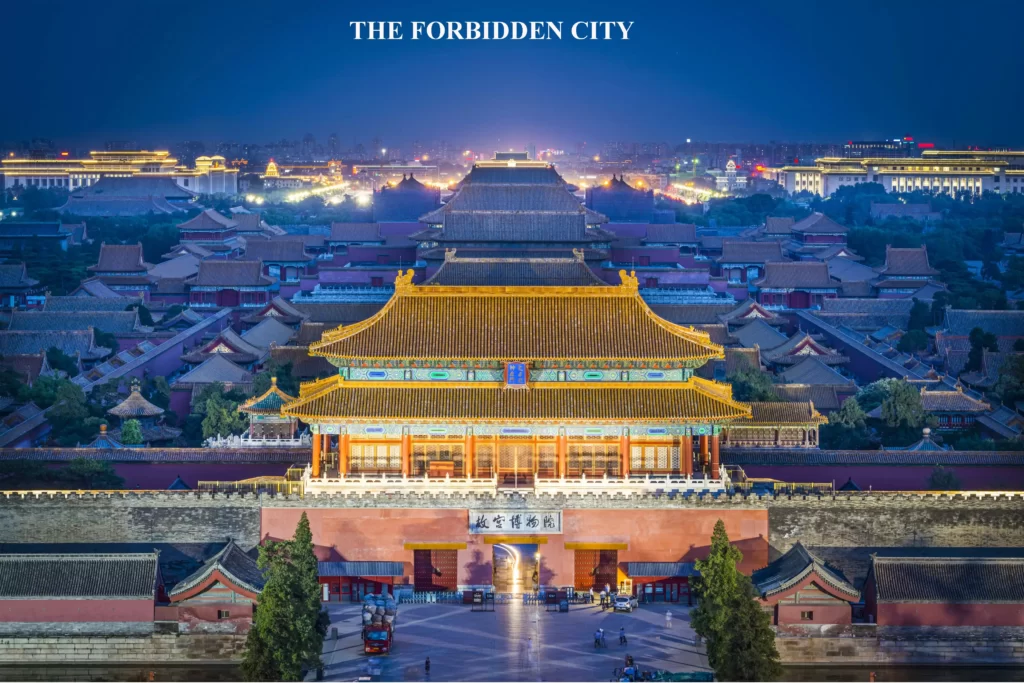
iii) The Temple of Heaven
The Temple of Heaven is a complex of religious buildings located in Beijing, China. It was built in the early 15th century during the Ming Dynasty and served as a place of worship for emperors. The temple complex is divided into two main parts: the Hall of Prayer for Good Harvests and the Imperial Vault of Heaven.
The Hall of Prayer for Good Harvests is the most impressive building in the temple complex, and it is characterized by its circular shape and its three-tiered roof. The Imperial Vault of Heaven is a smaller building located to the south of the Hall of Prayer for Good Harvests, and it is characterized by its blue-tiled roof and its circular shape.
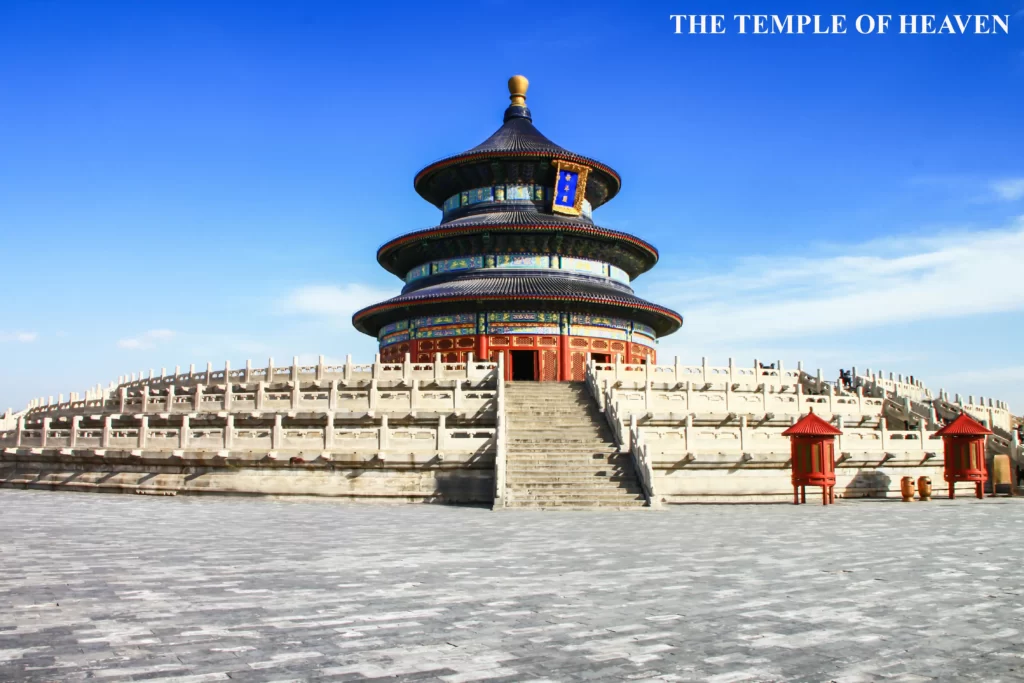
iv) The Terracotta Army
The Terracotta Army is a collection of terracotta sculptures depicting the armies of the first emperor of China, Qin Shi Huang. It was constructed in the 3rd century BC and was discovered in 1974 by local farmers in Xi’an, China.
The Terracotta Army is considered one of the greatest archaeological finds of the 20th century and is a UNESCO World Heritage Site. The army consists of over 8,000 life-size statues of soldiers, chariots, and horses. Each statue is unique, and they are all incredibly detailed, featuring intricate armor, weapons, and hairstyles.
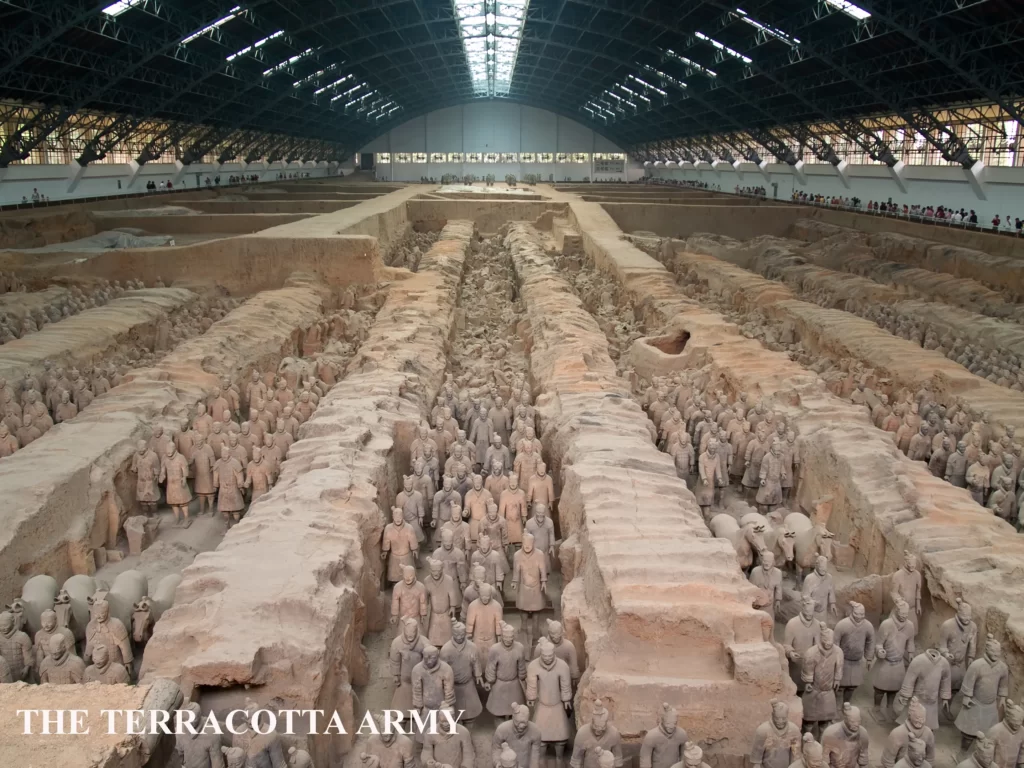
v) The Summer Palace
The Summer Palace is a palace complex located in the northwest suburbs of Beijing, China. It was constructed in the 18th century during the Qing Dynasty and was used as a summer retreat for the imperial family. The palace complex is characterized by its gardens, lakes, and pavilions.
It covers an area of 2.9 square kilometers and is a UNESCO World Heritage Site. The Summer Palace is considered one of the most beautiful gardens in the world and is a masterpiece of Chinese landscape architecture.

vi) The Potala Palace
The Potala Palace is a palace located in Lhasa, Tibet, China. It was constructed in the 7th century and was the winter palace of the Dalai Lama until the 14th Dalai Lama fled to India during the 1959 Tibetan uprising.
The palace complex is characterized by its white and red walls, golden roofs, and hundreds of rooms. The palace is also home to numerous Tibetan Buddhist relics, including statues, murals, and scriptures.

These iconic Chinese architectural wonders represent a rich and diverse cultural heritage that has evolved over centuries. They showcase the genius of Chinese architects and engineers, as well as the creativity, artistry, and spirituality of the Chinese people. Visiting these sites is an unforgettable experience that offers a glimpse into the rich history and culture of China.
In conclusion, the Great Wall, the Forbidden City, and the Temple of Heaven are iconic examples of Chinese architecture and engineering. They are not only impressive in their scale and beauty, but they also hold significant historical and cultural value for China. These structures have become symbols of China’s rich cultural heritage and are visited by millions of people from around the world each year.
4) Influence of Chinese Architecture in Contemporary Times
Chinese architecture has had a significant influence on modern architecture. It has inspired many architects and designers around the world, and elements of traditional Chinese architecture can be seen in contemporary buildings and designs. The unique features and characteristics of Chinese architecture, such as its emphasis on harmony and balance, have been adapted and integrated into modern architecture, creating a fusion of old and new.
One example of the influence of Chinese architecture on modern architecture is the use of curved roofs, a traditional Chinese architectural feature. The iconic Sydney Opera House, designed by Danish architect Jørn Utzon, features a series of curved roofs that were inspired by the shape of the sails of Chinese junks. The use of curved roofs in modern architecture is not limited to public buildings but can also be seen in residential buildings and private homes.
Another example of the influence of Chinese architecture on modern architecture is the use of traditional Chinese materials, such as bamboo and wood. These materials are sustainable and eco-friendly and have become increasingly popular in contemporary architecture. Modern buildings in China and around the world are incorporating bamboo and wood into their designs, creating buildings that are not only aesthetically pleasing but also environmentally friendly.
The importance of preserving and promoting traditional Chinese architectural styles cannot be overstated. As China continues to modernize, many traditional buildings and architectural styles are being lost. Preserving and promoting traditional Chinese architecture can help to maintain a connection to China’s cultural heritage and can also serve as a source of inspiration for modern architects and designers.
In conclusion, Chinese architecture has had a significant influence on modern architecture, and elements of traditional Chinese architecture can be seen in contemporary buildings and designs. The use of curved roofs and traditional materials is just one example of how traditional Chinese architecture has been adapted in modern architecture. Preserving and promoting traditional Chinese architectural styles is crucial to maintaining a connection to China’s cultural heritage and inspiring future generations of architects and designers.
5) Conclusion
In summary, Chinese architecture has a rich history and diverse styles, including imperial, Buddhist, and traditional. It has evolved over time and influenced modern architecture through its unique features and materials. Chinese architectural wonders, such as the Great Wall, the Forbidden City, and the Temple of Heaven, are significant cultural heritage sites.
Preserving and promoting traditional Chinese architecture is crucial to maintaining a connection to China’s cultural heritage and inspiring future generations of architects and designers. It is important to explore and appreciate the beauty and diversity of Chinese architecture, which has a significant impact on the world of architecture and design.